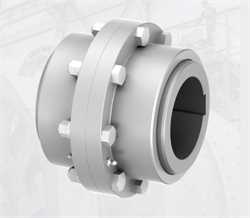
Product Name: Ringfeder TNZ ZCA/TNZ ZCB Gear Coupling
Brand: Ringfeder
Product Code: TNZ ZCA/TNZ ZCB
Tags: Ringfeder
TNZ ZCA/TNZ Gear
TNZ ZCA/TNZ ZCB Gear
Ringfeder ZCA/TNZ Coupling
TNZ ZCA/TNZ ZCB Gear Coupling
Ringfeder ZCA/TNZ ZCB Gear Coupling
TNZ ZCA/TNZ ZCB Gear Coupling
Ringfeder ZCA/TNZ
TNZ ZCB Coupling
Ringfeder ZCA/TNZ Gear
Gear Coupling
TNZ Gear Coupling
Ringfeder TNZ ZCA/TNZ
Ringfeder TNZ ZCA/TNZ ZCB
TNZ ZCB
ZCA/TNZ Coupling
TNZ ZCA/TNZ ZCB Gear Coupling
TNZ ZCA/TNZ Gear
ZCA/TNZ ZCB Gear
Gear Coupling
Are you interested in the product Ringfeder TNZ ZCA/TNZ ZCB Gear Coupling from manufacturer Ringfeder with code TNZ ZCA/TNZ ZCB? Contact us now and get offer. Imtek Engineering, the fastest and most reliable industrial equipment supplier in the world, will offer you the best offer!
Get Offer With E-Mail: info@im-tek.com
Get a offer for Ringfeder TNZ ZCA/TNZ ZCB Gear Coupling from our live support team now!
Standard hubs The RINGFEDER® TNZ ZCA coupling is a torsionally stiff gear coupling designed to have some backlash and consists of two coupling halves that are connected by ?tted bolts.Unlike the TNZ ZCA coupling, the RINGFEDER® TNZ ZCB comes with a bolt-on O-ring carrier which facilitates installation by changing the mounting sequence. For mounting the coupling, unscrew the cover and place it on the shaft. Mount the hub onto the shaft, slide the sleeve onto the hub and fasten the O-ring carrier to the sleeve. This way of mounting is advantageous when large couplings are involved.Characteristics General features Torsionally rigid gear coupling made of high-quality steel Very compact design results in a high-power density Compensates for angular, radial and axial shaft offset Suitable for use in temperatures up to +120 °C if special seals are used Available with split sleeve (ZCA / ZCB - ZCA model range also available in ZCB design) and single-piece sleeve (ZCH) The elastic O-Ring can be replaced without having to move the coupled machines Bores up to 270 mm Torques up to TKn = 195,000 Nm / TKmax = 390,000 Nm Speeds up to nmax = 6,000 rpm General description The RINGFEDER® TNZ coupling is a torsionally rigid twin cardanic gear coupling. Toothing The coupling housings have a straight internal toothing whilst the hubs have an external toothing with a chased variable radius. As a result, the hubs can move spatially within the housing and thus compensate angular, radial and axial shaft misalignment of the adjoined shaft ends within specified tolerances. Depending on coupling type and size, the standard toothing permits an angular misalignment of up to 0.5 degrees per toothing-plane and an axial movement of several millimetres. The max. possible radial shaft displacement is dependent on the distance between the two toothing planes. Other toothing geometries can be used for further specific applications. Materials High-grade tooth profiles and grease with ultra high-pressure additives guarantee low-restoring forces and a long serviceable life. The material used is forged steel with an apparent yielding point of at least 335 N/mm2. Special materials can be used for further specific applications. Sealing is carried out using O-Rings of synthetic rubber. The housings are centred and held together by fit-bolts and self-locking nuts. Temperature The use of special seals permits the temperature limit to be raised to 120 °C. Balance At peripheral speeds upwards of 30 m/s it is advisable to dynamically balance the coupling. Special applications If greater misalignments are anticipated at higher speeds and torques, an examination is necessary, performed with the assistance of a special computing programme. This is independent of the determined size. The value TKmax may not be exceeded in any state of operation (start-up, electrical short circuit, blocking, etc.). Tolerances and standards The bore tolerance is ISO H7, if not differently ordered. The bore diameters listed refer to keyways to DIN 6885-1 with toleranz ISO P9.